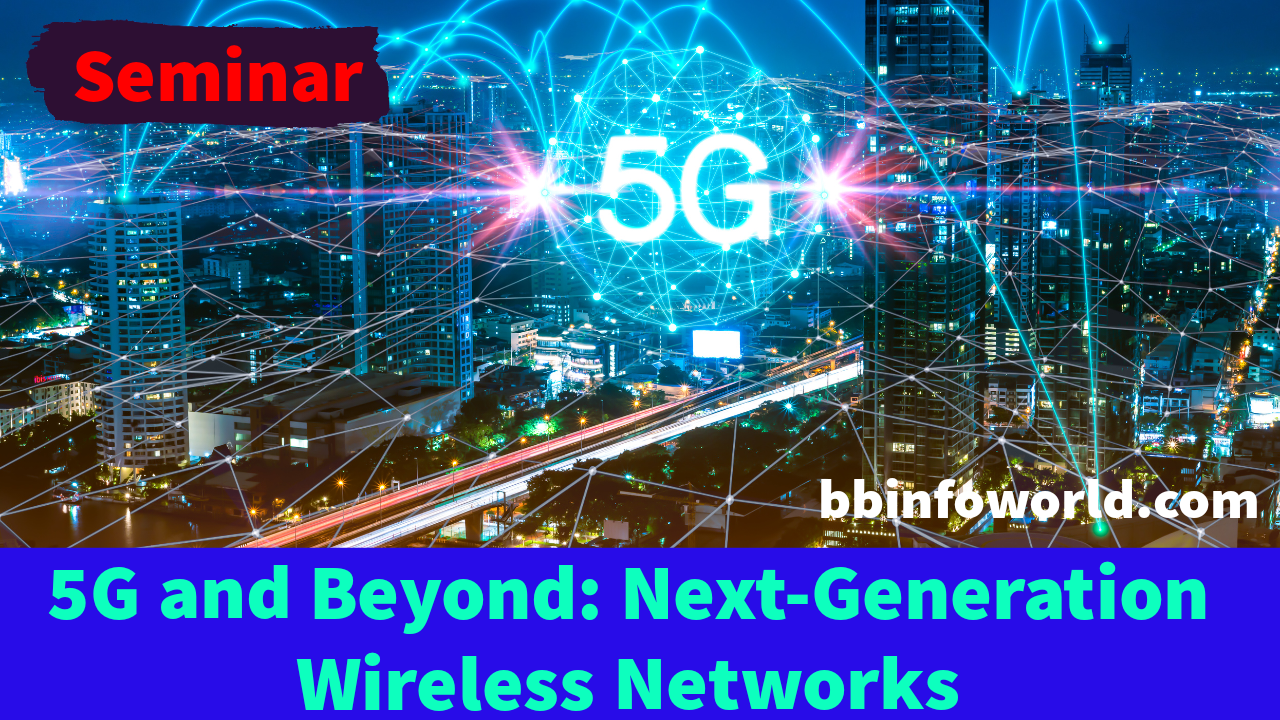
5G and Beyond: Next-Generation Wireless Networks
Discuss the potential of 5G networks and explore the research and development of future wireless communication technologies
Introduction:
The evolution of wireless communication has been a driving force behind the digital revolution. 5G networks, the fifth generation of wireless technology, have emerged as a significant leap forward, promising unparalleled speed, lower latency, and massive device connectivity. This seminar delves into the world of 5G networks and beyond, exploring their potential, the technology behind them, and the ongoing research and development of future wireless communication technologies.
Working Principle:
5G networks build upon previous generations with advancements in multiple areas. They use higher-frequency radio waves, enabling faster data transfer rates and lower latency. Massive MIMO (Multiple Input, Multiple Output) technology enhances network capacity and device connectivity. Small cells and beamforming improve coverage in densely populated areas. Network slicing allows tailoring networks for specific applications. Beyond 5G, research focuses on using even higher frequencies, advanced antenna technologies, and new modulation schemes.
Advantages:
- High Speeds: 5G networks offer significantly higher data transfer speeds, supporting applications like high-definition video streaming and real-time gaming.
- Low Latency: Reduced latency in 5G enables near-instantaneous communication, critical for applications like remote surgery and autonomous vehicles.
- Massive Device Connectivity: 5G supports a massive number of devices, essential for the Internet of Things (IoT) and smart city applications.
- Enhanced Reliability: 5G networks are designed to be more reliable, supporting mission-critical applications.
- Network Slicing: The concept of network slicing allows customized networks for different applications, optimizing performance.
Limitations:
- Infrastructure Deployment: Implementing 5G requires significant infrastructure upgrades, including new cell towers and equipment.
- Signal Range: Higher-frequency waves used in 5G have shorter ranges, requiring more infrastructure for full coverage.
- Compatibility: Not all devices are compatible with 5G technology, leading to a gradual transition.
- Cost: Building and upgrading networks for 5G requires substantial investment.
Applications:
- Enhanced Mobile Broadband: Faster speeds enable high-quality streaming, virtual reality experiences, and real-time communication.
- Internet of Things (IoT): 5G’s massive device connectivity supports smart devices, sensors, and applications in various industries.
- Healthcare: Remote patient monitoring, telemedicine, and real-time image sharing benefit from 5G’s low latency.
- Smart Cities: 5G enables efficient traffic management, environmental monitoring, and infrastructure optimization.
- Industry 4.0: Manufacturing and industrial automation benefit from reliable and low-latency wireless communication.
- Autonomous Vehicles: 5G’s low latency is crucial for communication between vehicles and traffic infrastructure.
Beyond 5G, the future of wireless communication holds promise with advancements like terahertz communication, free-space optics, and mesh networks. These technologies aim to push the boundaries of data transfer speeds, coverage, and reliability. As the foundation of modern connectivity, the development of wireless networks has the potential to transform industries, economies, and societies. This seminar offers insights into the evolution of wireless networks, from 5G to the next frontier of wireless communication technologies.



